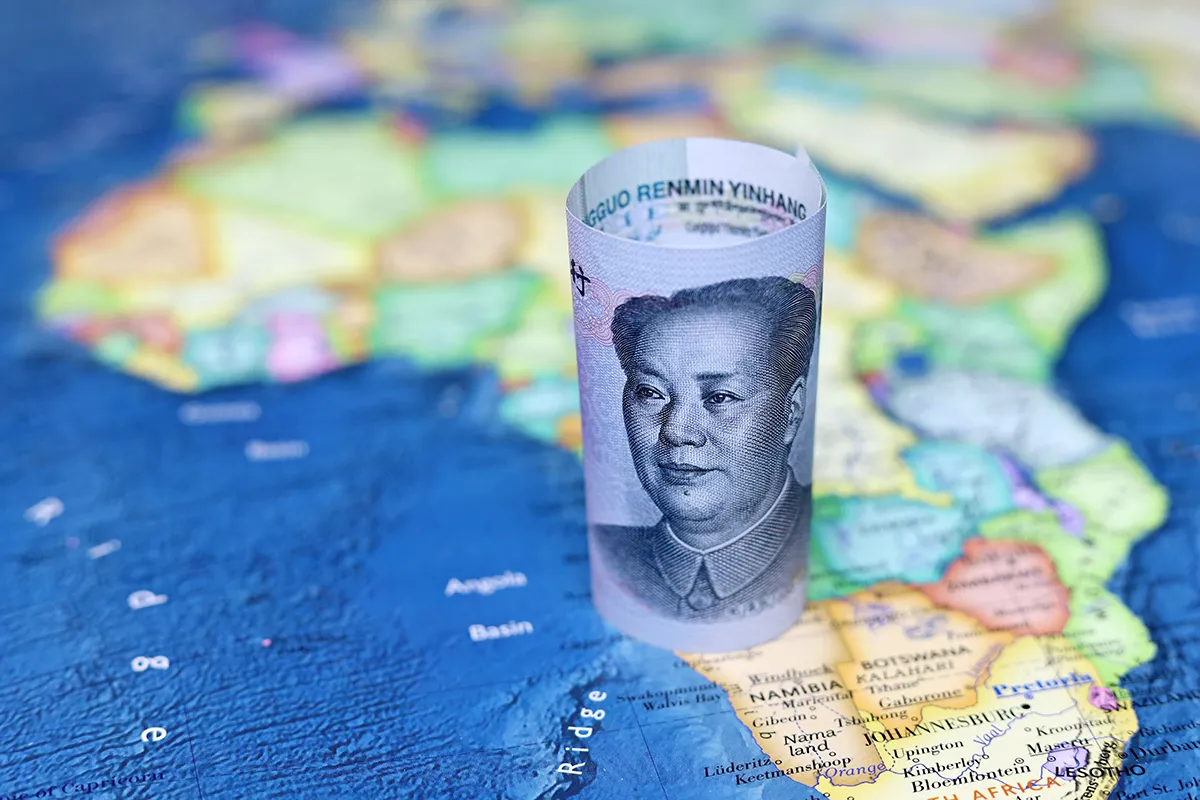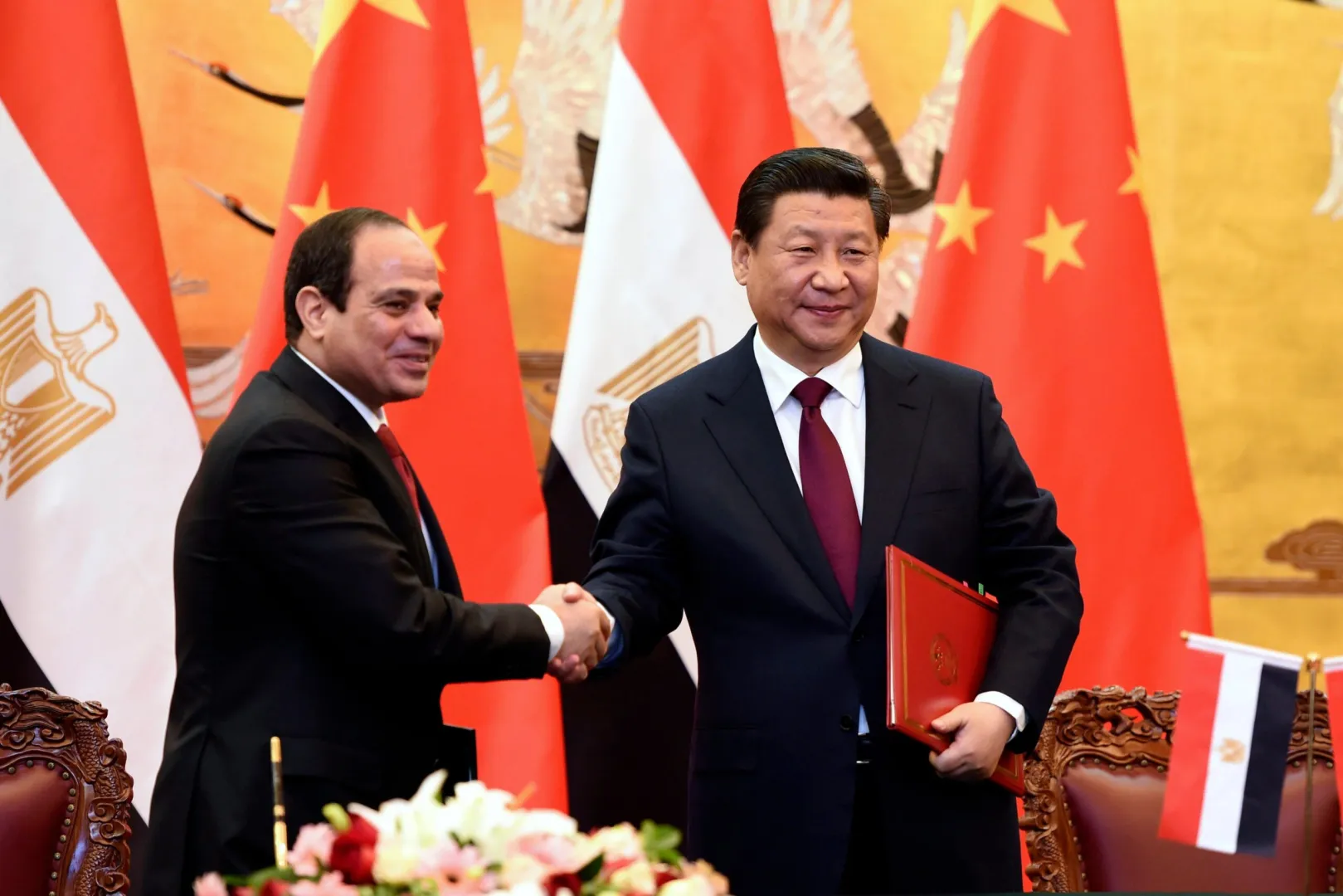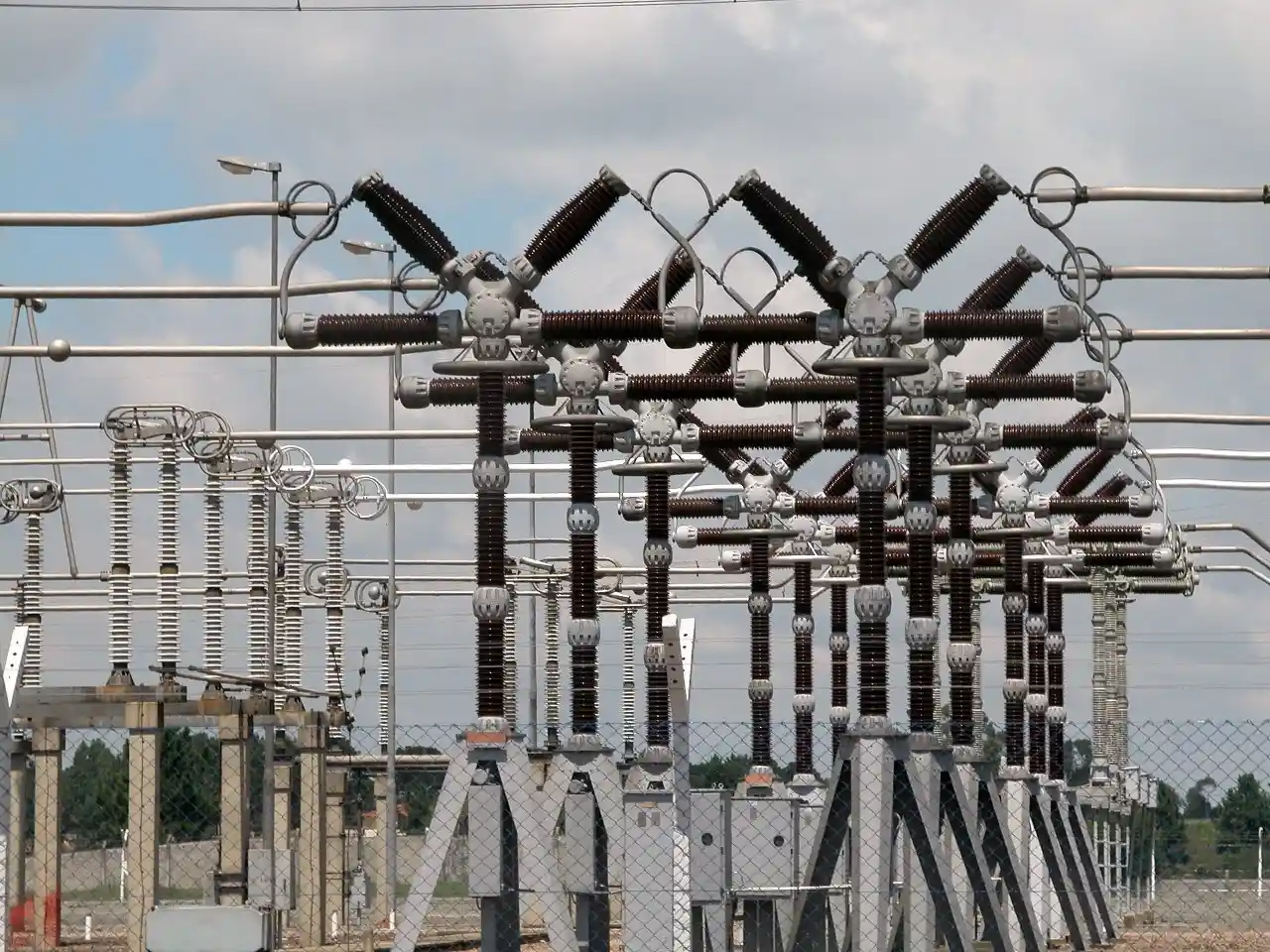African stock markets demonstrated remarkable resilience and momentum during the third quarter of 2025, with Nigeria, Kenya, and Morocco emerging as the strongest performers as investor confidence improved following months of currency volatility and macroeconomic uncertainty. The latest market capitalization data from Kenya’s Capital Markets Authority (CMA) reveals that out of nine African exchanges analyzed, six recorded impressive double-digit gains over the quarter, signaling a broad-based recovery across the continent’s capital markets.
However, this encouraging performance comes with a caveat: persistent reporting gaps from several bourses continue to obscure a comprehensive view of Africa’s investment landscape, raising questions about transparency and coordination among regional exchanges as they seek to attract more foreign capital and deepen financial integration.
Build the future you deserve. Get started with our top-tier Online courses: ACCA, HESI A2, ATI TEAS 7, HESI EXIT, NCLEX-RN, NCLEX-PN, and Financial Literacy. Let Serrari Ed guide your path to success. Enroll today.
Understanding the Methodology and Context
The analysis draws on the CMA’s quarterly market-capitalization data for selected African bourses, comparing average monthly market capitalization figures for the second and third quarters of 2025. While market capitalization is influenced by multiple factors—including currency movements, new listings, delistings, and changes in share prices—it remains one of the most widely used indicators of overall market performance and investor sentiment across global financial markets.
It’s important to note that the data reflects complex interplay between local economic conditions, currency valuations against the US dollar, corporate performance, and shifting investor risk appetites in both domestic and international markets. The quarter’s performance represents a significant turnaround from earlier periods when many African markets struggled with capital flight, currency depreciation, and diminishing foreign investor participation.
Nigeria: Africa’s Strongest Rebound Story
The Nigerian Exchange Limited (NGX) posted the continent’s strongest growth in the third quarter, with market capitalization surging by an impressive 25.83% from $60.1 billion in Q2 to $75.7 billion in Q3. This remarkable rally represents a validation of ongoing economic reforms and marks a significant turnaround for Africa’s largest economy, which had grappled with severe currency instability and capital outflows in previous quarters.
The Nigerian market’s resurgence was supported by several key factors that converged to create favorable conditions for equity investments. Improved foreign participation returned to the market after months of hesitation, as international investors gained confidence in the Central Bank of Nigeria’s monetary policy direction and the government’s commitment to economic reforms. The naira exhibited relative stability compared to its precipitous decline in 2024, reducing currency risk concerns that had previously deterred both foreign and domestic institutional investors.
Renewed buying interest concentrated particularly in banking and oil-linked stocks, two sectors that dominate the NGX by market capitalization. The banking sector benefited from the ongoing recapitalization exercise mandated by the Central Bank, which required banks to significantly increase their capital bases to strengthen the financial system’s resilience. Major banks including Access Holdings, Zenith Bank, and Guaranty Trust Holding Company saw substantial share price appreciation as investors positioned for the sector’s transformation.
Oil-linked stocks gained traction as crude oil prices stabilized and production levels showed marginal improvements despite persistent challenges in the Niger Delta region. Investor optimism around ongoing banking and monetary reforms contributed significantly to the positive sentiment, with market participants increasingly viewing Nigeria as having turned a corner after years of policy uncertainty.
The insurance sector emerged as a standout performer, recording an extraordinary 61.50% quarterly growth according to Bamboo’s Q3 2025 Sector Performance Summary. This surge was driven by impressive rallies from companies like Mutual Benefits Assurance, which gained 248.2%, and AIICO Insurance, which advanced 120%. The sector’s performance underscores renewed investor confidence, buoyed by improved underwriting results, successful recapitalization efforts, and growing demand for risk coverage amid Nigeria’s increasingly volatile business environment.
The industrial goods sector posted a robust 43.80% gain, while the banking sector advanced 39.46% over the second quarter, demonstrating broad-based strength across multiple segments of the Nigerian economy. These sectoral performances highlight how different parts of the market contributed to the overall rally, creating what analysts describe as a more sustainable bull run compared to narrow rallies driven by just a few stocks.
Kenya: Confidence Returns to East Africa’s Financial Hub
The Nairobi Securities Exchange (NSE) followed Nigeria’s lead with an equally impressive 23.39% increase in market capitalization, rising from $16.8 billion to $20.7 billion during the third quarter. This performance marked the market’s strongest trading quarter in four years, with the NSE 20 Share Index climbing 21.8% quarter-on-quarter, signaling a decisive shift in investor sentiment toward East Africa’s largest economy.
The Kenyan market’s recovery was characterized by significantly increased turnover and rising institutional participation, both critical indicators of market depth and sustainability. Domestic institutional investors, particularly pension funds and insurance companies, returned to the market after periods of caution, deploying capital into blue-chip stocks that had been oversold during previous quarters of pessimism.
The banking sector attracted particular attention, prompting the NSE to launch a dedicated Banking Sector Index in October 2025 to track the performance of Kenya’s 11 listed banks. This new index provides investors with a transparent and reliable measure of the banking sector’s performance, comprising institutions such as Equity Group Holdings, KCB Group, and Cooperative Bank of Kenya, all of which saw significant trading activity during the quarter.
However, the positive performance came with a concerning countertrend: foreign participation in total equity turnover fell to a 15-year low of 28.01% in September 2025, down from 31.28% in August. This marked the lowest level of foreign participation since August 2010, when it stood at 21.8%. The decline in foreign investor activity raises questions about the sustainability of the rally and highlights ongoing challenges in attracting international capital despite improved domestic investor confidence.
The Central Bank of Kenya’s decision to cut the Central Bank Rate by 25 basis points to 9.25% in October provided additional support for equities, as lower interest rates made fixed-income securities less attractive relative to stocks. This monetary policy shift, combined with moderating inflation expectations, created a more favorable environment for risk assets and contributed to the market’s strong performance.
Morocco: Stability and World Cup Optimism Drive Growth
The Bourse de Casablanca recorded an 11.93% increase in market capitalization, growing from $101.3 billion in Q2 to $113.4 billion in Q3. As Africa’s third-largest stock exchange by market capitalization, Morocco’s consistent performance reflects the kingdom’s stable macroeconomic environment and its strategic positioning as a gateway between Europe and Africa.
Morocco continues to benefit from several structural advantages that differentiate it from many African markets. Strong domestic liquidity, driven by a well-developed banking system and mandatory pension contributions, provides a consistent source of demand for equities. Stable macroeconomic policy, characterized by moderate inflation, prudent fiscal management, and a relatively stable currency, reduces the volatility that plagues many emerging markets.
Increased institutional investment, particularly in financials and industrials, has deepened the market and improved price discovery mechanisms. Morocco’s close trade and investment ties with Europe also supported market stability, as European investors view the kingdom as a relatively lower-risk entry point for African exposure.
The 2030 FIFA World Cup, which Morocco will co-host alongside Spain and Portugal, has emerged as a major driver of investment flows. Since FIFA’s announcement in October 2023, there has been a surge in public and private investments across multiple sectors to support the kingdom’s preparations, including infrastructure, hospitality, telecommunications, and construction.
Market participants report elevated trading volumes continuing into 2025, with CEO Karim Hajji telling African Business that investor confidence has risen considerably. “We are witnessing quite a turning point in terms of the development of the Bourse de Casablanca,” he noted, citing the World Cup as one of the major catalysts for increased capital flows.
The exchange is also preparing to launch Morocco’s first cash-settled futures contract on the MASI 20 index, having received regulatory approval in May 2025. This sophisticated product aims to enhance market liquidity and attract more institutional investors seeking hedging and speculative opportunities.
Egypt: Resilience Amid Macroeconomic Pressures
The Egyptian Exchange (EGX) demonstrated notable resilience, with market capitalization rising from $46.0 billion to $51.4 billion, representing an 11.6% quarter-on-quarter increase. This performance is particularly impressive given Egypt’s ongoing struggles with high inflation, currency challenges, and a complex macroeconomic environment that has tested investor confidence.
The benchmark EGX30 index rose 11.6% during the quarter to close at 36,670.08 points, driven by broad gains across multiple sectors. The EGX70 EWI added 10.55%, while the EGX100 EWI rose 8.4%, indicating that market strength extended beyond just the largest companies to include mid-cap and smaller firms.
Trading activity surged during the quarter, with trading value reaching 4.96 trillion Egyptian pounds, compared to 3.86 trillion pounds in the previous quarter. Transaction volumes increased to 102.1 billion securities executed across 7.15 million transactions, up from 6.04 million in Q2, demonstrating heightened investor engagement.
Investor sentiment improved substantially following the implementation of IMF-backed economic reforms, which included fiscal adjustments, subsidy reductions, and exchange rate liberalization. These reforms, while painful in the short term, signaled to international investors that Egypt was committed to addressing its structural economic challenges and creating a more sustainable growth trajectory.
Banking and real estate stocks were among the top gainers during the quarter, benefiting from policy changes and improved liquidity conditions. The banking sector particularly benefited from interest rate adjustments and improved credit conditions, while real estate companies gained from pent-up demand and government initiatives to stimulate the property sector.
Notably, domestic investors dominated stock transactions with a 90.5% share, while foreign investors accounted for only 5.1% and Arab investors 4.4%. Foreign investors were net sellers of 3.95 billion pounds during the quarter, highlighting continued caution among international investors despite the market’s strong performance.
Smaller Markets Show Steady Progress
Several smaller African exchanges also posted solid gains during the third quarter, demonstrating that the market recovery extended beyond just the continent’s largest bourses.
Rwanda (+10.49%): The Rwanda Stock Exchange (RSE) increased from $2.71 billion to approximately $3.0 billion, a respectable gain for Africa’s smallest exchange by market capitalization among those analyzed. While modest in absolute size, the RSE continues to demonstrate consistent growth supported by stable corporate earnings, a strong regulatory environment, and Rwanda’s reputation for business-friendly policies and good governance.
Ghana (+10.46%): The Ghana Stock Exchange (GSE) rose from $12.0 billion to $13.2 billion, reflecting a gradual return of investor confidence following the country’s challenging debt restructuring process. Local pension funds and institutional investors drove renewed activity, viewing equities as increasingly attractive compared to restructured government bonds with longer maturities and lower coupons.
The Bank of Ghana’s recent call for more banks to list on the exchange represents a broader effort to deepen the country’s financial markets and attract long-term investment. This initiative, if successful, could significantly expand the market’s breadth and liquidity in coming years.
South Africa (+9.61%): The Johannesburg Stock Exchange (JSE), Africa’s largest and most liquid market, grew from $1.11 trillion to $1.216 trillion, representing a 9.61% increase. While the percentage gain was more modest than in West and East African markets, the JSE’s absolute increase of over $100 billion in market capitalization dwarfed the total value of most other African exchanges.
As the continent’s financial anchor and the primary destination for international investors seeking African exposure, the JSE’s steady performance provided a stabilizing influence for the broader regional market. The exchange continues to benefit from South Africa’s deep capital markets infrastructure, sophisticated financial services sector, and inclusion in major emerging market indices.
Seychelles (+5.44%) and Mauritius (+0.73%): The MERJ Exchange in Seychelles gained 5.44% as it continues to carve out a niche in digital and tokenized securities, positioning itself as a potential hub for innovative financial instruments including digital assets and security tokens. The Stock Exchange of Mauritius posted more modest growth at 0.73%, reflecting a mature market with limited new listings but continued stability that appeals to risk-averse investors.
One decision can change your entire career. Take that step with our Online courses in ACCA, HESI A2, ATI TEAS 7, HESI EXIT, NCLEX-RN, NCLEX-PN, and Financial Literacy. Join Serrari Ed and start building your brighter future today.
The Data Transparency Challenge
While the strong performance of major African exchanges in Q3 2025 provides grounds for optimism, a significant concern emerged regarding data transparency and consistency across the continent. Several markets reported incomplete or missing data for Q2 or Q3, severely limiting analysts’ ability to assess true pan-African market performance and compare exchanges effectively.
Markets with incomplete data included Botswana, Angola’s BODIVA exchange, Zambia’s Lusaka Securities Exchange, Namibia, and Tanzania’s Dar es Salaam Stock Exchange. The BRVM, which serves eight West African countries (Benin, Burkina Faso, Côte d’Ivoire, Guinea-Bissau, Mali, Niger, Senegal, and Togo), released only Q3 data, while Tunisia’s exchange published only Q2 figures.
These gaps underscore ongoing challenges with disclosure standards and coordinated market reporting across the continent. Unlike more developed regions where exchanges adhere to standardized reporting requirements and timelines, African bourses operate with varying levels of regulatory sophistication, technical capacity, and commitment to transparency.
The lack of consistent, timely data creates several problems for African capital markets:
Limited Comparability: Investors and analysts cannot effectively compare performance across markets or assess relative value opportunities when data is incomplete or reported on different schedules.
Reduced Foreign Interest: International institutional investors typically require comprehensive, standardized data to conduct due diligence and comply with their own reporting obligations. Data gaps serve as red flags that may deter allocation to African markets.
Weakened Integration Efforts: Regional integration initiatives, such as the African Continental Free Trade Area’s provisions for financial market integration, depend on harmonized standards and transparent data sharing among exchanges.
Undermined Credibility: Inconsistent reporting damages the credibility of African exchanges and reinforces stereotypes about opacity and poor governance that African markets have been working to overcome.
Factors Driving the Q3 Rally
Several macroeconomic and market-specific factors converged to create favorable conditions for African equities during the third quarter:
Currency Stabilization: After severe volatility in 2024 and early 2025, several African currencies showed greater stability against the US dollar. The Nigerian naira, Kenyan shilling, and Egyptian pound all exhibited less dramatic fluctuations, reducing one of the key risks that had deterred both foreign and domestic investors from holding equities.
Monetary Policy Shifts: Central banks in several markets began easing monetary policy as inflation moderated. Kenya’s rate cut in October, and similar moves in other markets, made equities more attractive relative to fixed-income securities and stimulated economic activity that benefited corporate earnings.
Reform Implementation: Ongoing economic reforms in Nigeria, Egypt, and other markets signaled policy seriousness to investors. While reforms often create short-term pain through subsidy cuts, currency adjustments, and fiscal tightening, they also build confidence in longer-term economic sustainability.
Corporate Earnings Strength: Strong earnings reports from major companies, particularly in the banking, telecommunications, and consumer goods sectors, validated equity valuations and encouraged investors to maintain or increase allocations to stocks.
Technical Factors: After extended periods of decline or stagnation, many African markets had reached technically oversold levels, attracting value-oriented investors who saw attractive entry points based on historical valuation metrics.
Sectoral Performance Highlights
The third quarter saw strong performance across multiple sectors, with some standout areas:
Banking: The financial sector was a major driver across most markets, benefiting from recapitalization exercises, improved net interest margins as interest rates stabilized, and stronger credit quality as economies improved. Banking stocks in Nigeria, Kenya, and Egypt all posted substantial gains.
Insurance: Nigeria’s insurance sector led all sectors with a 61.50% quarterly gain, driven by recapitalization, improved underwriting discipline, and increased risk awareness among consumers and businesses.
Industrial Goods: Companies involved in construction materials, manufacturing, and industrial supplies performed strongly, particularly in Nigeria and Morocco, where infrastructure investment and World Cup preparations drove demand.
Consumer Goods: Despite ongoing macroeconomic challenges, consumer goods companies showed resilience, with investors betting on the long-term demographic trends favoring consumption growth across the continent.
Technology and Telecommunications: While not explicitly broken out in most sectoral data, technology-related stocks and telecommunications companies continued to attract investor interest given Africa’s rapid digital transformation and mobile penetration growth.
Outlook and Implications
The mixed but generally positive performance across Africa’s stock exchanges in Q3 2025 reflects an uneven but improving capital market landscape. Reform-led markets such as Nigeria and Kenya are clearly benefiting from renewed investor participation and stabilizing macroeconomic conditions, while Morocco and Egypt continue to offer relative stability amid external headwinds affecting global emerging markets.
Smaller markets like Rwanda and Ghana are emerging as quiet outperformers, demonstrating that opportunities exist beyond just the continent’s largest bourses. These smaller exchanges may offer attractive risk-adjusted returns for investors willing to accept lower liquidity in exchange for exposure to faster-growing economies with improving governance.
However, several challenges remain that could impact African markets in coming quarters:
Foreign Participation Decline: The sharp drop in foreign investor participation in Kenya, combined with continued net selling in Egypt, suggests that international investors remain cautious despite improved local market performance. Without sustained foreign inflows, African markets may struggle to break out to new highs and could face increased volatility during periods of global risk aversion.
Currency Risk Persistence: While currencies stabilized somewhat in Q3, the structural challenges driving currency weakness—including fiscal deficits, current account imbalances, and heavy debt burdens—remain unresolved in many markets. Any renewed bout of currency instability could quickly reverse equity market gains.
Data Transparency Gaps: The persistent gaps in market data reporting must be addressed if African exchanges hope to attract more institutional capital and facilitate greater regional integration. Closing these gaps will require coordinated action among exchanges, regulators, and regional economic communities to establish and enforce minimum reporting standards.
Global Economic Uncertainty: African markets remain heavily influenced by global economic conditions, commodity prices, and developed market monetary policy. Any significant deterioration in the global economic outlook or unexpected policy moves by major central banks could trigger capital outflows from African markets.
Political and Security Risks: Elections, political transitions, and security challenges in various African countries could introduce volatility and uncertainty that undermines investor confidence and market performance.
Implications for Investors
For investors considering African equities, the Q3 2025 performance data offers several key takeaways:
Selectivity Matters: The wide dispersion in performance across African markets underscores the importance of country and exchange selection. Blanket exposure to “African equities” through broad indices may not capture the best opportunities, as individual country factors drive significant performance differences.
Reform Progress is Rewarded: Markets where governments demonstrate commitment to economic reforms and policy stability tend to outperform, suggesting that investors should focus on countries with credible reform agendas rather than just the lowest valuations.
Local Knowledge is Essential: Understanding local market dynamics, corporate governance standards, regulatory environments, and political contexts is crucial for successful African equity investment. The data transparency challenges highlighted in this analysis emphasize the need for on-the-ground research capabilities.
Diversification Across Africa: Given the low correlation between some African markets and the continent’s diversity, a well-diversified portfolio of African equities can provide attractive risk-adjusted returns while reducing exposure to any single country’s specific challenges.
Long-Term Perspective Required: African equity investing requires patience and a long-term perspective, as markets can experience extended periods of volatility driven by currency fluctuations, political developments, and global risk sentiment shifts.
Conclusion: Progress with Caveats
The third quarter of 2025 marked an important milestone for African capital markets, with six of nine analyzed exchanges posting double-digit gains and Nigeria, Kenya, and Morocco leading a broad-based recovery. These results suggest that African markets are regaining momentum after challenging periods, supported by improving macroeconomic conditions, ongoing reforms, and renewed investor confidence.
However, this positive narrative comes with important caveats. The decline in foreign investor participation, particularly in East Africa, raises questions about sustainability. The persistent gaps in data reporting from several exchanges undermine transparency and limit comparability. And the structural economic challenges that have long constrained African markets—including currency instability, fiscal pressures, and infrastructure deficits—remain largely unresolved.
For African capital markets to build on Q3’s strong performance and fulfill their potential as engines of economic development and wealth creation, several developments will be necessary. Exchanges must commit to consistent, transparent reporting that meets international standards. Governments must maintain discipline in implementing economic reforms even when they prove politically difficult. Regulators must continue strengthening market infrastructure, investor protection, and corporate governance standards. And regional organizations must accelerate efforts to harmonize regulations and facilitate cross-border investment flows.
The encouraging performance in Q3 2025 demonstrates that African markets can deliver strong returns when conditions align favorably. The challenge now is to build on this momentum, address persistent structural weaknesses, and create the foundations for sustained, long-term growth in African capital markets. As the continent continues its demographic expansion and economic development, well-functioning equity markets will be essential for channeling domestic and international capital toward productive investments that drive broad-based prosperity.
Ready to take your career to the next level? Join our Online courses: ACCA, HESI A2, ATI TEAS 7 , HESI EXIT , NCLEX – RN and NCLEX – PN, Financial Literacy!🌟 Dive into a world of opportunities and empower yourself for success. Explore more at Serrari Ed and start your exciting journey today! ✨
Track GDP, Inflation and Central Bank rates for top African markets with Serrari’s comparator tool.
See today’s Treasury bonds and Money market funds movement across financial service providers in Kenya, using Serrari’s comparator tools.
Photo source: Google
By: Montel Kamau
Serrari Financial Analyst
11th November, 2025
Article, Financial and News Disclaimer
The Value of a Financial Advisor
While this article offers valuable insights, it is essential to recognize that personal finance can be highly complex and unique to each individual. A financial advisor provides professional expertise and personalized guidance to help you make well-informed decisions tailored to your specific circumstances and goals.
Beyond offering knowledge, a financial advisor serves as a trusted partner to help you stay disciplined, avoid common pitfalls, and remain focused on your long-term objectives. Their perspective and experience can complement your own efforts, enhancing your financial well-being and ensuring a more confident approach to managing your finances.
Disclaimer: This article is for informational purposes only and does not constitute financial advice. Readers are encouraged to consult a licensed financial advisor to obtain guidance specific to their financial situation.
Article and News Disclaimer
The information provided on www.serrarigroup.com is for general informational purposes only. While we strive to keep the information up to date and accurate, we make no representations or warranties of any kind, express or implied, about the completeness, accuracy, reliability, suitability, or availability with respect to the website or the information, products, services, or related graphics contained on the website for any purpose. Any reliance you place on such information is therefore strictly at your own risk.
www.serrarigroup.com is not responsible for any errors or omissions, or for the results obtained from the use of this information. All information on the website is provided on an as-is basis, with no guarantee of completeness, accuracy, timeliness, or of the results obtained from the use of this information, and without warranty of any kind, express or implied, including but not limited to warranties of performance, merchantability, and fitness for a particular purpose.
In no event will www.serrarigroup.com be liable to you or anyone else for any decision made or action taken in reliance on the information provided on the website or for any consequential, special, or similar damages, even if advised of the possibility of such damages.
The articles, news, and information presented on www.serrarigroup.com reflect the opinions of the respective authors and contributors and do not necessarily represent the views of the website or its management. Any views or opinions expressed are solely those of the individual authors and do not represent the website's views or opinions as a whole.
The content on www.serrarigroup.com may include links to external websites, which are provided for convenience and informational purposes only. We have no control over the nature, content, and availability of those sites. The inclusion of any links does not necessarily imply a recommendation or endorsement of the views expressed within them.
Every effort is made to keep the website up and running smoothly. However, www.serrarigroup.com takes no responsibility for, and will not be liable for, the website being temporarily unavailable due to technical issues beyond our control.
Please note that laws, regulations, and information can change rapidly, and we advise you to conduct further research and seek professional advice when necessary.
By using www.serrarigroup.com, you agree to this disclaimer and its terms. If you do not agree with this disclaimer, please do not use the website.
www.serrarigroup.com, reserves the right to update, modify, or remove any part of this disclaimer without prior notice. It is your responsibility to review this disclaimer periodically for changes.
Serrari Group 2025












